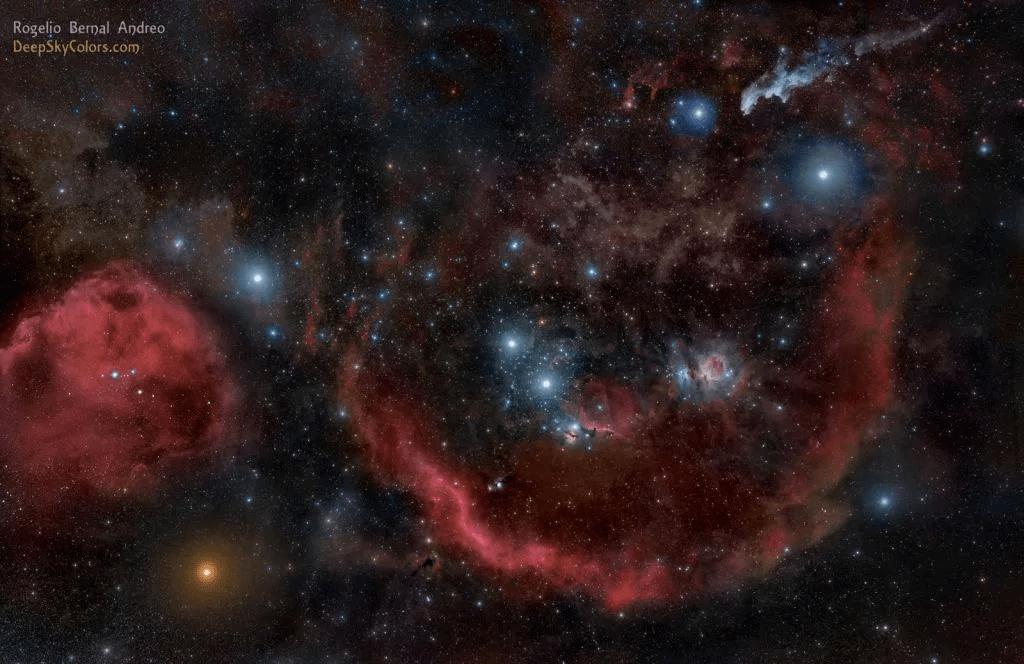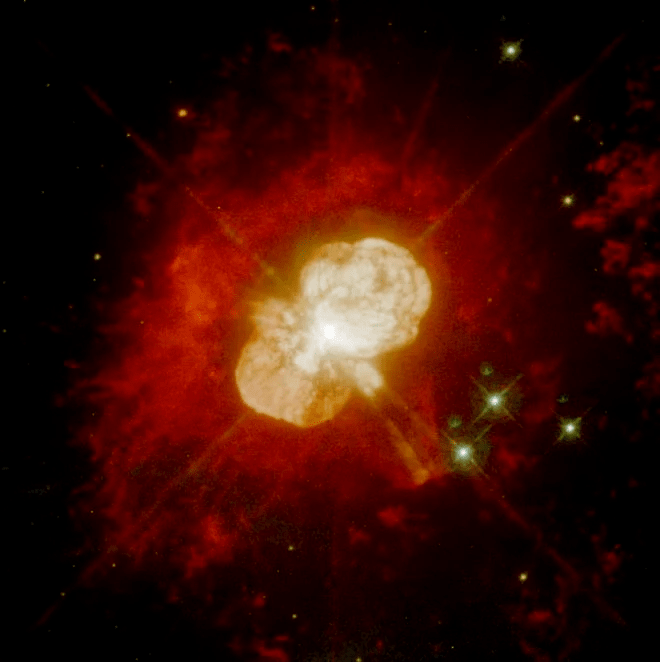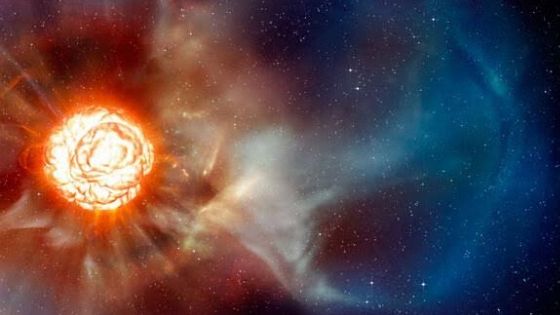Betelgeuse, one of the brightest stars in the night sky, is part of the Orion constellation – it makes up the hunter’s “shoulder”. To facilitate the identification of the constellation, it is enough to find the ensemble we popularly call “the three Marys”, the trio that forms the Orion belt. Betelgeuse’s brilliance has been dwindling considerably in recent months, so many people are already beginning to speculate that the red supergiant is finally entering the supernova process. But calm down, this is not going to happen anytime soon – we probably won’t even be around when this show explodes in the sky.
It is estimated that the phenomenon will happen anytime between today and 100,000 years, but as the star is more than 600 light years from Earth, when it becomes a supernova, it will take centuries to reach us.
Betelgeuse’s variability in brightness was first noticed by British astronomer John Herschel in 1836 and since then, the scientific community has been watching the star, anxious for the moment to explode into a supernova. When this happens, the red supergiant (about 20 times the mass of the sun) will shine in the sky as much as Rigel, the brightest star in the constellation Orion and the seventh brightest in the sky. But before that, the star will have its brightness reduced more and more during the collapse process, until the explosion finally happens. Its minimum brightness was detected in 1927, 1941 and also in the late 1970s – so much speculation and anxiety about the supernova process.

Betelgeuse is in the last stages of its “life”, and probably for that reason presents so much variability in its brightness. However, this “end of life” is an extremely lengthy process for the notion of time that we humans have, even though on cosmic scales this is like a “breath”.
The supernova in question will provide such a beautiful sight in our sky that its brightness will be visible even during the day, and may even be brighter than the moon at night. The last supernova we could see from here on Earth happened in 1604 – Kepler’s Supernova – and was visible day and night for over three weeks. As Betelgeuse is at least 10 times closer to us, and has an even greater radius than the star that exploded centuries ago (about 600 million km), the light show will be even more intense and striking.
But then again, the bucket of cold water comes with the mathematical odds: According to NASA’s Eric Mamajek, the odds of such an event happening in the coming decades are only about 0.1 percent. So the chances of admiring a “second moon” in the sky in our lifetime is slim – at least for the Betelgeuse supernova.
Eta Carinae gives us hope
If Betelgeuse is unlikely to present us with a supernova in our lifetime, who gives us any hope of some celestial show happening is Eta Carinae – a binary system that has been erupting for decades, and may be the next star system to provide a bright show in the sky.
Eta Carinae shines with an intensity of five million suns, although it cannot be seen with the naked eye. However, when the supernova explodes, its brightness can be seen even during the day for a few weeks. But while this will only happen within a few million years, that same star will give us its brilliance in just over 10 years.

According to the Brazilian astronomer Augusto Damineli, from the University of São Paulo, just over a decade is the time needed for the cloud of gas and dust that covers Eta Carinae, preventing its observation with the naked eye from Earth, to dissipate enough for its brightness to be revealed to us when the system light will be 2.5 times brighter than it is today.
Eta Carinae is only 2.5 million years old and is part of the rare class of bright blue with warmer temperatures. The binary system is in the constellation Carina and was cataloged in 1677 by Edmond Halley – the one who names the famous comet. The eruption that raised its brightness to the point where the star could be identified from here on Earth occurred in 1843, but soon afterwards a nebula was formed around it over 3 trillion kilometers. Filled with gas and dust, the nebula dims the star’s brightness, so we can’t see it with the naked eye, only through telescopes that can “penetrate” the nebula (like those who “see” the infrared region in the electromagnetic spectrum).
“By 2032, or four years or so, the dust will be gone and the star’s apparent brightness will no longer increase, but it will overshadow the nebula. That is: in a few years, we will lose the opportunity to take beautiful pictures of the nebula of the star. Carina, but we will see more clearly the pair of twin stars”, said the astronomer.
Source: Bad Astronomy, CNet, British Astronomical Association

